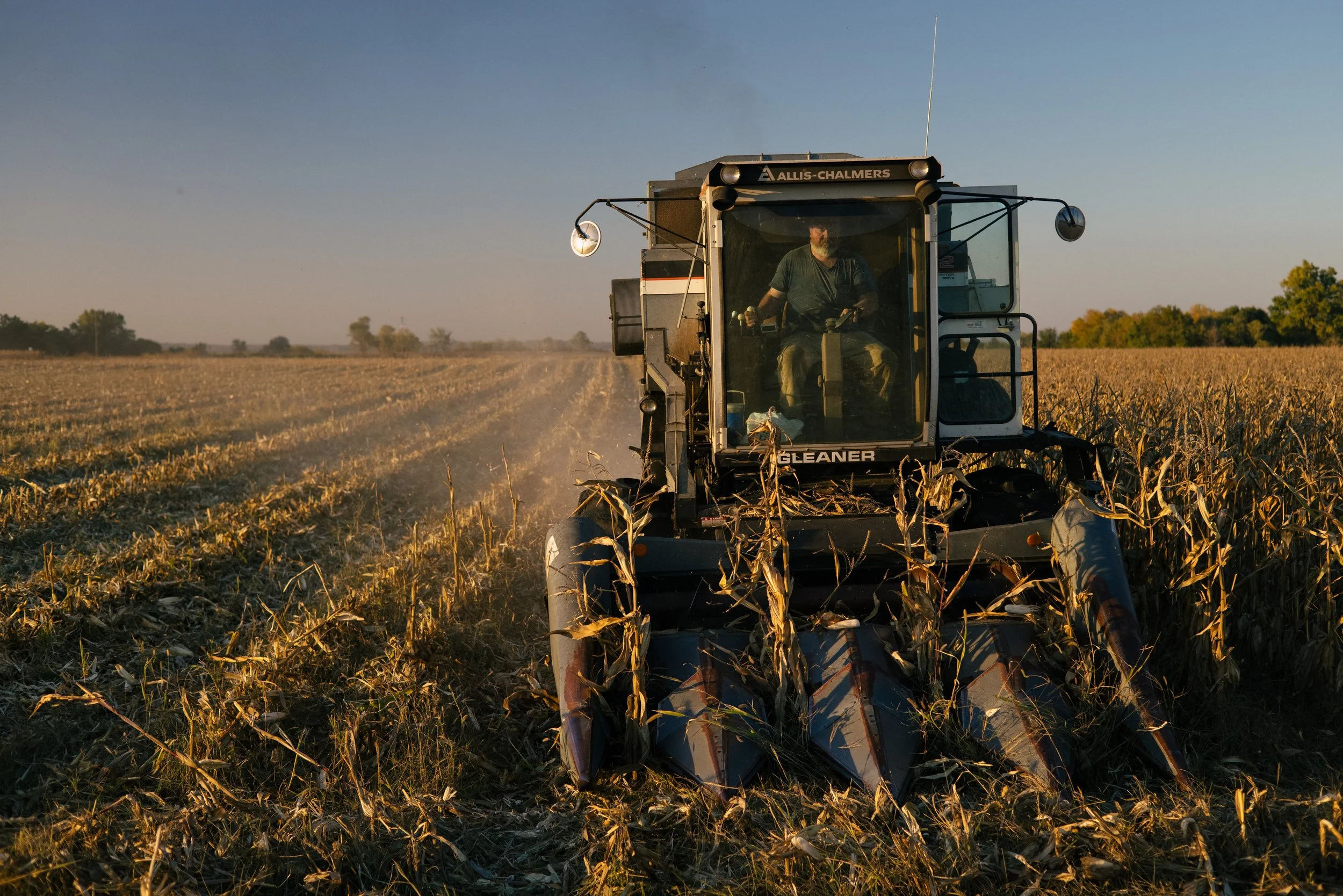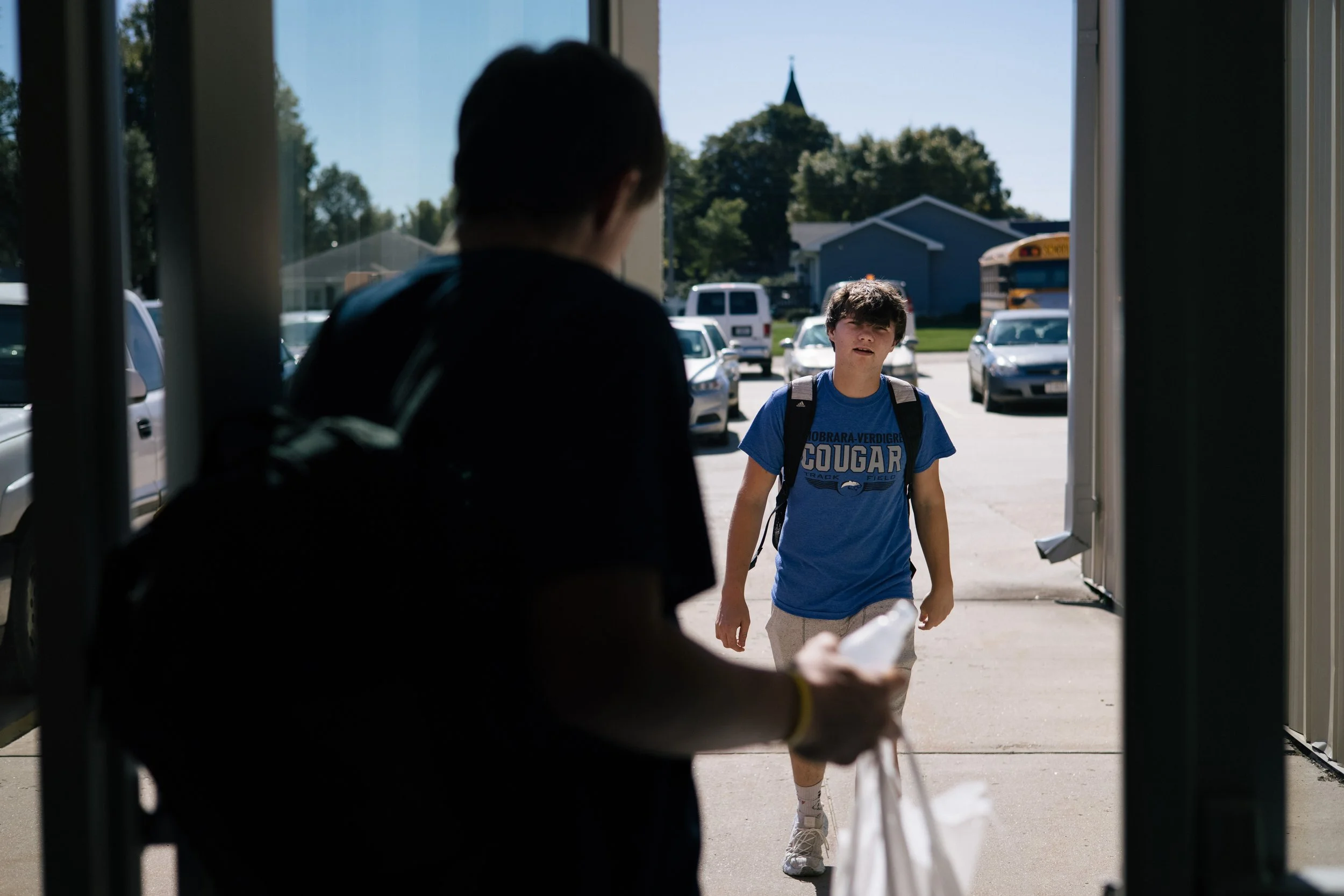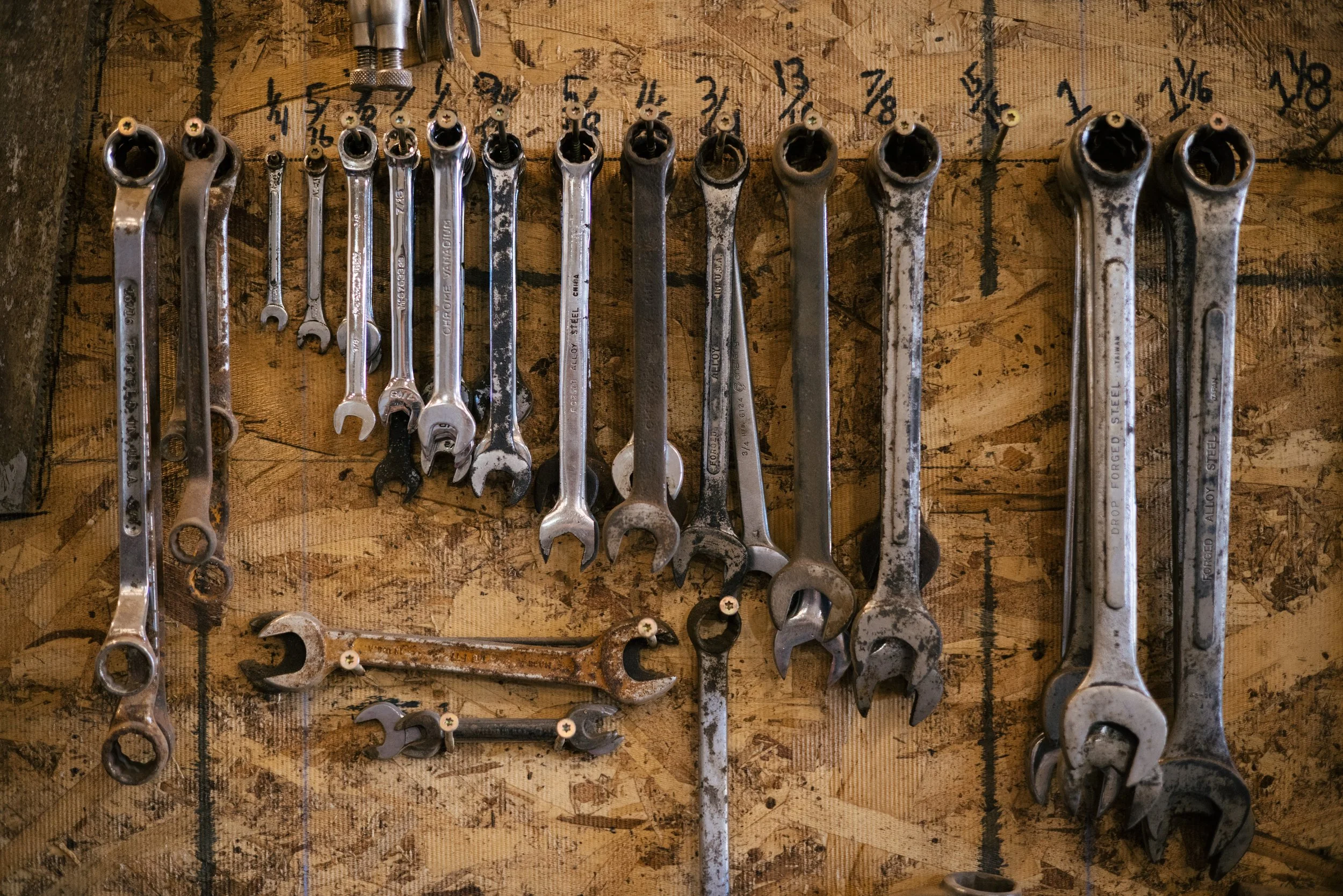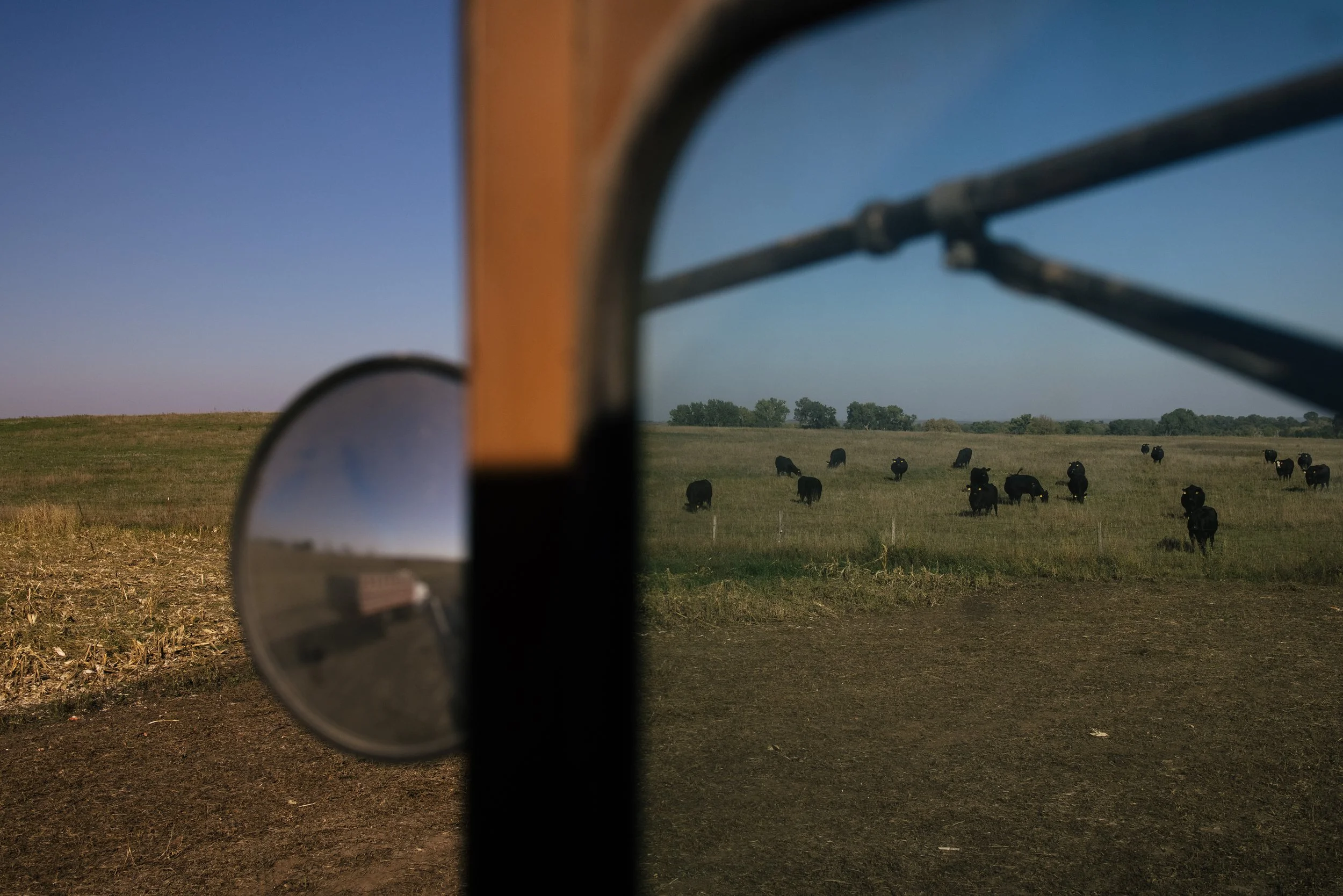Jeff Uhlir harvests corn on his farm in Knox County.
In Nebraska, a 151-year-old family farm struggles to survive.
‘Once We’re Gone, We’re Not Coming Back’
Photographed and written for the New York Times
In his earliest memories of his family’s farm, Ethan Uhlir rides in an old truck with his grandfather Arden, feeding cattle and mending fences.
Before Arden’s death five years ago, he “reminded me that I was a good cattleman,” Ethan said, and “I have to keep it like that.”
Ethan, now 17, still notices his grandfather’s wiring technique in fence posts scattered across the farm in the rolling plains of northeast Nebraska, along the South Dakota border. He walks along the same paths as six generations of Uhlirs, but Ethan may be the last to work the land.
Ethan Uhlir
“There’s enough labor for four people but not enough income for one,” his father, Jeff, said.
Like most farmers, Jeff sells his cattle, corn and soybeans at prices set by a global commodities market, but only large farms can absorb the narrow profit margins.
Though the family’s small farm is valuable — its 880 acres are assessed at $1.3 million — property taxes eat up most of the money it does make.
Even in a good year when the farm grosses $60,000, Jeff feels lucky if he has money left over for savings.
“I’ll have to work an hour before my funeral,” Jeff, 51, said. “I have no retirement.”
For families like the Uhlirs, farming is increasingly unsustainable, as drought and extreme weather, fluctuating commodity prices and rising costs alter the economics of running a small- to midsize operation. Hundreds of family farms file for bankruptcy each year in the United States, with the largest share routinely coming from the Midwest.
Nebraska’s high property taxes, which it collects from its 93 counties and reapportions, are compounded by Knox County’s shrinking population.
The town of Verdel, just north of the Uhlir farm, has a population of just 30 people.
About 8,400 people live in the county, down 26.8 percent over the last 40 years. With fewer taxpayers, farmers who own hundreds of acres must shoulder the cost of schools, roads and other public services. After paying for necessities like fertilizer, seed and pesticides, Jeff must cover a $15,965.68 property tax bill.
Nebraska’s agricultural land property taxes are 46 percent higher than the national average, according to a 2019 report by the University of Nebraska, Lincoln, and most farmers pay 50 to 60 percent of their net income in taxes.
Sixty percent of Nebraska property taxes pay for schools.
The high school that Ethan attends is in Verdigre, a town of 550 people 20 minutes southeast of the farm. It has one teacher for every six students.
Like Ethan, most of the seniors commute to school from farms outside of town.
Agricultural business, his biggest class, has eight students. The school has so much capacity and so few students that Ethan has two lockers. In the spring, he will graduate with only seven classmates.
Some mornings before school, Ethan stocks shelves and works as a cashier at Tom’s Family Foods, a job he’s had since he was 14. He also folds towels at his mother’s salon in Verdigre and helps out on the farm.
On the farm, Ethan says he’s always been drawn to the family’s 80 cattle. “I like helping things be better and feel better.”
Next fall, Ethan hopes to pursue an associate degree in nursing. “I don’t think that I would be able to financially support myself just living off the farm,” he said.
On a crisp, bright afternoon in early October, Ethan watched his father weld their broken 1980s combine harvester head, which cuts and threshes corn.
Before taking over the farm from his ailing father in 2016, he spent years making a living as a welder for a construction company and for the state’s Department of Roads.
He can’t afford a new quarter-million-dollar combine, so he tries to fix the aging machinery on his own.
“[Ethan] will help me if I tell him I need help, but he’s not out there with me to know what I do, how to fix stuff, how to keep something going,” Jeff said.
Most of “the equipment we have, my grandfather bought,” Ethan said.
Ethan had once hoped to be named the Future Farmers of America’s “Star Farmer,” just like his grandfather Arden in 1960.
During the 1980s farm crisis, Arden nearly lost the farm. He took on debt and worked to pay it off up until the last few years of his life. His wife, Karen, worked for 16 years in an Alzheimer’s unit at an assisted-living facility in Verdigre.
“They never went to the dentist. They couldn’t afford to,” Jeff said. “They never went on vacation. They never spent any money on each other.”
Seeing his parents struggle, Jeff has avoided debt.
Jeff en route to harvest alfalfa.
“I’d love to be able to buy land close to me and expand what I do, but there ain’t no way at 51 years old,” he said. “I’d have to live to 160 to be able to pay it off.”
Jeff’s financial situation is worse than previous generations, he said. “Every year, the property valuations get higher and everything else don’t keep up.”
The family has farmed the land for 151 years, he said. “How do I sell it?”
Payday comes once a year on the farm: in the fall, when Jeff sells cattle and crops.
“If I do everything right, I make $70 a head” when he sells to the packing house, he said. But with soybeans and corn, “you don’t know if prices are going to go down, and you take what you take.”
This spring, Jeff tried to increase the output of his soil by fertilizing his fields.
But then for more than two months, “we didn’t get a drop” of rain. Drought yielded short ears of corn and tiny, pea-sized soybeans.
“We’re taxed based on sales and soil composition,” he said. “At no point does rainfall become a factor.”
Much of the Uhlirs’ land is sandy, a result of retreating glaciers 10,000 years ago. The soil is less fertile, and water passes through it quickly.
Knox County classifies four soil types when taxing agricultural use of land, and much of Jeff’s soil received the highest rating and a higher tax rate, despite lower yields than farms in other counties with less sandy soil.
Farming becomes more challenging as he ages, Jeff says, and he wonders what it will be like without Ethan next year, when he’s at college. “As my helper goes away, things get tougher.”
“At some point, the people raising your food are going to be dead,” Jeff said. “Once we’re gone, we’re not coming back.”
The family has survived plenty of physical and personal hardships. Just months after taking over the farm in 2016, Jeff broke his neck in a car accident. And on Mother’s Day 2020, most of their home was destroyed by an electrical fire that started in the attic.
The expense of unexpected health issues worries Jeff, who told his wife not to call the ambulance if he has a heart attack or stroke.
Karla Uhlir and her husband, Jeff.
“It would break my heart if this place got lost because of me, and I’m not going to be whole again if that happens,” he said.
Every year, Jeff travels to Lincoln, the state capital, to testify on property tax bills. He is also appealing how the county taxes his land.
When Ethan takes over from Jeff, he will probably continue to work in a health care facility an hour or two away.
To cover the property taxes, he might rent the land to another farmer or take part in the federal Conservation Reserve Program, which rents farmland for environmental restoration.
“It’s been in the name this long,” Ethan said. “I don’t want to be the weak link and lose it.”
Ethan on his family’s farm.

















